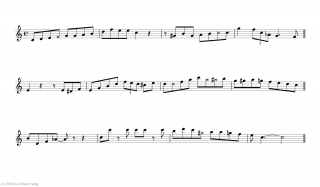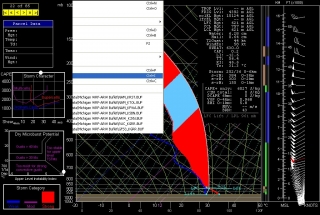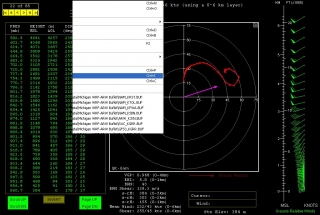Even as my book “The Giant Steps Scratch Pad” nears completion–it now awaits only the cover, which is being designed by a graphic designer friend of mine–my other, more ambitious project is also moving along. That would be my book on the 1965 Palm Sunday Tornadoes.
With important (to me, at least) information in my hands and a key interview now completed, the latest delay has been purely my own making. But it’s about to end. This afternoon I head down to Elkhart, Indiana, to interview my first two tornado survivors, one a retired police officer and the other an emergency worker who helped with rescue operations at the Midway Trailer Court.
This is exactly the boot in the butt I need to get myself going on the next phase of the book: firsthand accounts of tornado survivors. In the months to come, I anticipate making trips to northern Indiana and southeast Michigan, not to mention places in my hometown area of Grand Rapids, in order to get people’s stories straight from the sources.
If anyone reading this post was directly involved in the tornadoes (that is, you got hit by one of the tornadoes or otherwise witnessed a tornado in action) or knows of someone who was whom you think I might want to interview, please leave a comment on this post or else contact me.
Also, if you know of photographs of the actual storms that aren’t already in common circulation, I’d be keenly interested in seeing them. I’m not talking about damage photos, nor am I talking about photos such as the twin funnels hitting Midway that are accessible online. Rather, I’m thinking of old, long-forgotten photographs that might be sitting in your dresser drawer that you or your Uncle Pete snapped with the old Brownie camera. That kind of picture.
This next part will take time to complete, but it should be easier overall than the first part, particularly the second chapter. More updates will follow when I have news that’s worth sharing.



 Look at this skew-T and hodograph and tell me they’re not to die for. They’re the 00Z NAM for tomorrow, 21Z, at Rochester, Minnesota. Click on the images to enlarge them. (Apologies for the weird pulldown menu obscuring parts of the images. I don’t know why that happened.)
Look at this skew-T and hodograph and tell me they’re not to die for. They’re the 00Z NAM for tomorrow, 21Z, at Rochester, Minnesota. Click on the images to enlarge them. (Apologies for the weird pulldown menu obscuring parts of the images. I don’t know why that happened.)



